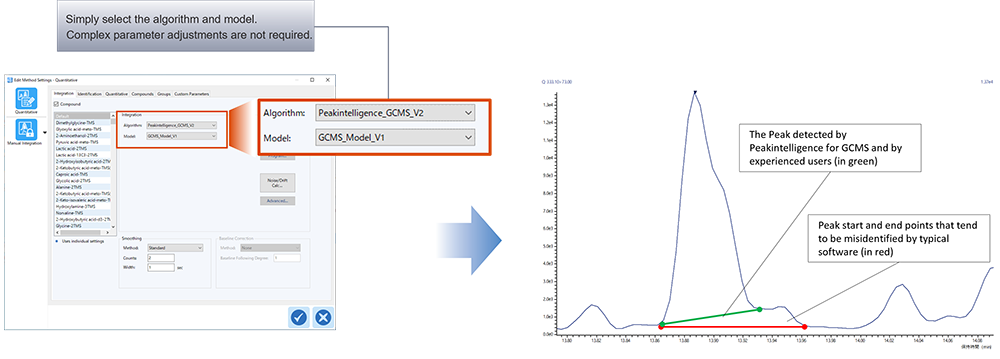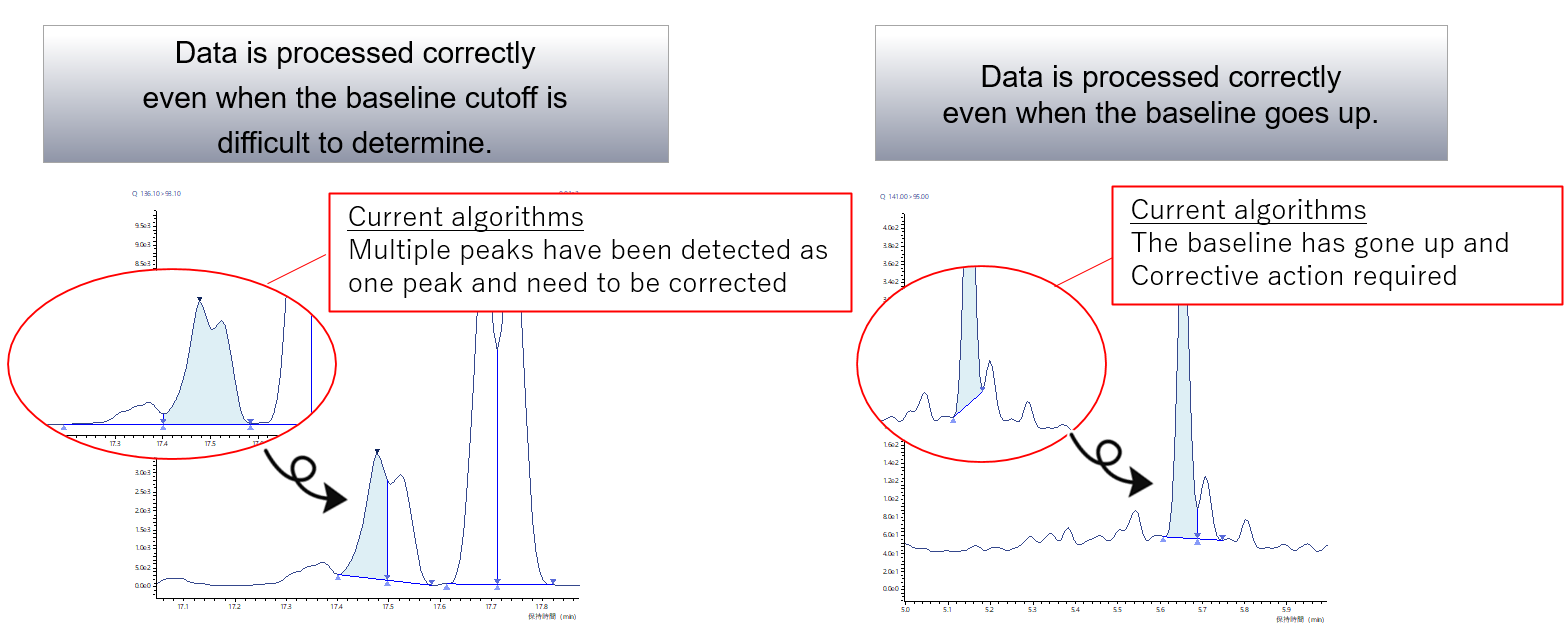June 1, 2023 | News & Notices
Using AI to Analyze Data Automatically, Support for hundreds of Residual Pesticides
Release of Peakintelligence for GCMS Ver. 2, AI Software for GC-MS/MS
Shimadzu Corporation released the Peakintelligence for GCMS Ver. 2 software for triple quadrupole gas chromatograph mass spectrometers (GC-MS/MS) on June 1. This software makes it possible for anyone to easily analyze data acquired from a GC-MS/MS using Shimadzu’s proprietary artificial intelligence (AI) algorithms. In addition to the Smart Metabolites Database *1, which was introduced in Ver.1 *2 released in May last year, the Quick-DB GC/MS Database for Pesticide Residue Analysis *3and the Smart Pesticides Database *4 are also now supported. Each country has its own law (the Food Sanitation Law in Japan) that determines limits for the amount of residual pesticides in food. With hundreds of pesticide measurement data subject to regulation, a large number of peaks *5 other than for the intended component appear during analysis, making evaluation difficult and requiring further extensive analysis. This software processes complicated data accurately and quickly, and reduces the risk of possible data tampering during food-safety pass/fail scenarios.

When performing residual pesticide analysis, the conventional data analysis process has some issues. For example, users themselves are required to find the appropriate peak detection parameters *6 for each analysis, which takes time. Also, because the parameters are chosen subjectively by the user, the results obtained vary depending on individual expertise. In contrast, the AI algorithms integrated into this software perform automatic, high-accuracy detection of peaks appearing frequently in chromatograms of measurement results obtained by GC-MS/MS. This software eliminates the need for the user to configure the parameters and provides data analysis accuracy on par with that achieved by an experienced user, even for trace samples. Not only does it eliminate the time to optimize parameters, it also reduces the workload of manual waveform processing to about 1/4 *7 and provides a standardized workflow. At Shimadzu, we are continuing with research and development of AI technology, and pursuing the incorporation of AI algorithms in all Shimadzu analytical instruments to create new value and solve social issues.
Features
1. Compatible with Databases for Residual Pesticide
Peakintelligence for GCMS is compatible with component measurements from the pesticide residues database in addition to the metabolic components database in version 1, making it able to measure hundreds of regulated residual pesticide ingredients accurately and quickly.
2. Expert-Level Analytical Reliability
The monitoring for a variety of pesticides and analysis of samples which are susceptible to impurities require visual and manual processing. Incorrect peak detection not only prevents correct pass/fail evaluation, but can also lead to data tampering. This software achieved a more than 90% match with analyses performed by skilled operators, meaning stable measurement results can be obtained regardless of the operator.

3. Achieving high operational efficiency
Visually checking and revising the analysis results obtained from GC-MS/MS requires a great deal of time. This product performs peak integration automatically using AI algorithms, so the time required to check, correct, and analyze the results is reduced to 1/4 of the conventional amount.
- *1: Teacher data provided by Osaka University and Shimadzu Institute of Analysis and Innovation
- *2: Database for GC/MS, GC-MS/MS to help create methods for metabolite analysis
- *3: Database for GC/MS, GC-MS/MS for rapid screening of pesticide residues in food
- *4: Database for GC/MS, GC-MS/MS to support method creation for pesticide residue analysis in food
- *5: Peak-shaped areas in the chromatogram (graph of measurement results) obtained by an analytical instrument. Their height and area indicate the amount of a compound present.
- *6: Conditions for detecting the starting point and ending point of peaks
- *7: When a single sample contains 475 components
For more details, visit
Peakintelligence™ for GCMS


